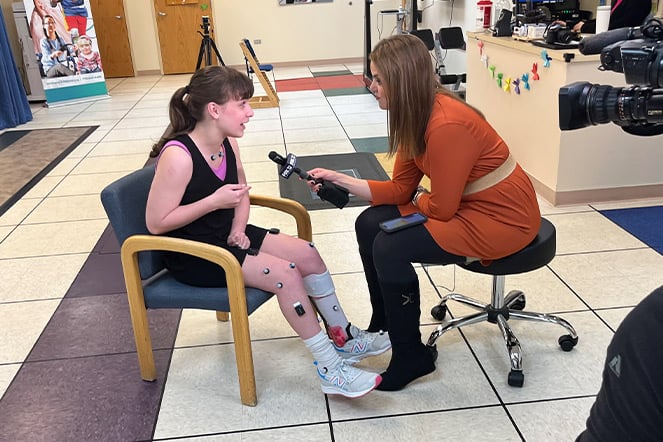Abbey has achieved remarkable milestones – from surgery and therapy, to dance, cheerleading, triathlons and advocacy – thanks to the medical care and unwavering support of her team at Shriners Children’s.
When Abbey was just 5 years old, she was diagnosed with cerebral palsy (CP), a condition which can affect muscle tone, movement and coordination. Abbey has spastic diplegia which primarily affects her leg muscles on one side, making her gait different than a typical teen. Her family learned about the multidisciplinary approach to treating CP available at Shriners Children’s Chicago, which specializes in pediatric orthopedics, cleft lip and cleft palate treatment, and spinal cord injury care and rehabilitation on the outskirts of Chicago. They scheduled an appointment and embarked on a journey of care that would unlock numerous opportunities for Abbey to accomplish remarkable things.
Since the types and severity of cerebral palsy can greatly vary, every child with CP can benefit from an individualized treatment plan. Abbey’s care team in Chicago is guided by the latest research combined with years of pediatric experience and input from the family. Typical care for CP may include orthopedic services, physical medicine and rehabilitation services, physical therapy, occupational therapy and speech therapy, along with bracing and equipment reviews. Shriners Children’s offers all of this in one location for busy families.
Thanks to therapy, a series of colorful patterned leg braces and several surgeries, Abbey can pursue her own busy, active life. During appointments with Peter Smith, M.D., her pediatric orthopedic surgeon, Abbey likes to share her goals and dreams. Here’s one she mastered in 2021. After an orthopedic surgery procedure to correct her heel bone alignment, she fulfilled her goal to walk on the beach in sandals, remarkable for an individual with gait differences caused by CP. She not only sported the sandals, but she also walked that beach barefoot. “Dr. Smith has steadily guided us into a world we never imagined. His skills and knowledge are second to none,” said Vicki, Abbey’s mother.
Abbey has also participated in several Miss You Can Do It Pageants for girls with special needs. This year, she received the 2025 Miss Illinois Amazing Impact Award in part for her generous work as a Patient Ambassador for Shriner Children’s. This prestigious award honors individuals who have gone above and beyond to impact their communities through service work over the past year. Abbey spoke about volunteering as a Patient Ambassador for the motion analysis center, as recently shared on Fox32 Chicago news. She and her parents also graciously attend various fundraising and Shriners International fraternal events connected to the sharing of our amazing specialty pediatric care in orthopedic surgery, neurology and pediatric therapy services. She has traveled to high school Shrine game patient/players experiences in two states.






